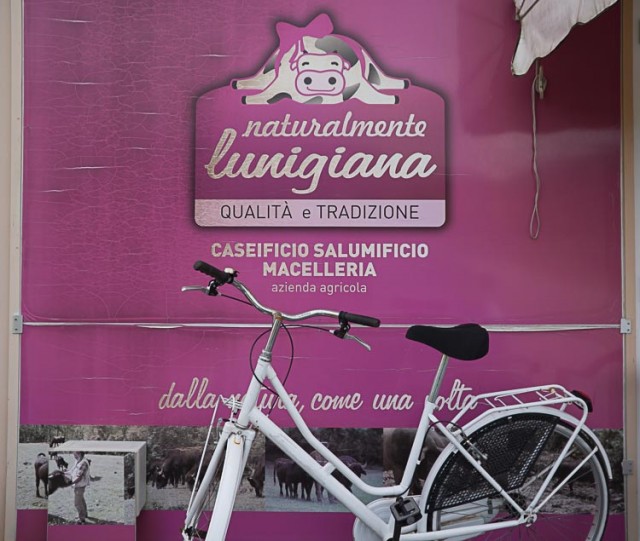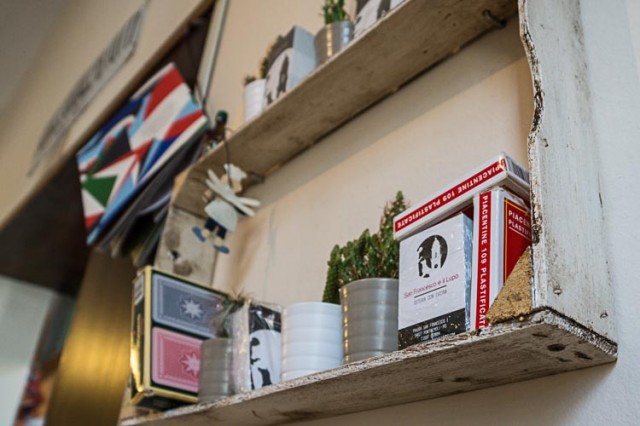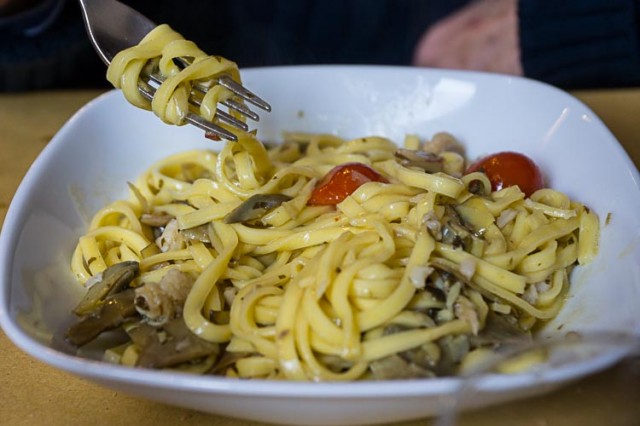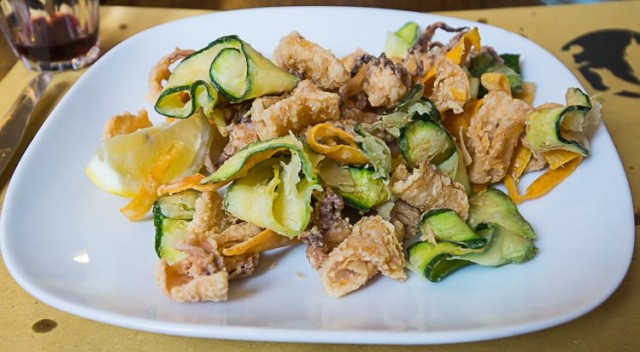Home Again - In Italy
We are home. In Italy.
We live in the rural Lunigiana when we're here. It is a place where folks make their own food (salami, honey, polenta, olive oil and the like) and where door locks are considered a proper nuisance and keys are left in them so they don't get lost.
It is a world apart from what we experience in California. When we drive up, Tim the dog jumps to greet us, and Francesca comes flying out the door. "Are you here for Easter! Do you want to eat together?"
Of course we do. Anyone who knows Francesca's cooking would be nuts to pass up an invitation like that.
It is unthinkable to Francesca that people with no place to go for a holiday or a feast day should spend the time alone. We eat with them often. There is a concept of togetherness, a social stickiness, that we don't experience in California.
As soon as we get ourselves together, it's time to do the serious shopping. Francesca asked us to bring cheese to Sundays repast, so we'll go out to our favorite store, Lunigiana Naturalmente, and gaze at the rows of oddly-shaped cheeses with aged, crackly skins. You don't think of Tuscany when you think cheese, but these guys manage to make a lot of very tasty things out of milk from various animals raised right--and even to an American who falls a bit behind in language studies they're proud and willing to explain the history and the philosophy behind the production of a cheese. Ask and it will all be explained to you, slowly and concisely.

But alas, they've cut their hours and aren't open in the mornings.
So we point the car toward the town of Pontremoli, where there's a good market for cheeses and meats. (There is also a varnish and ammunition store, but that's something for another time.) After a stroll from the parking lot that takes us past a medieval market stall and over a humpbacked bridge leading to the historic center, we find the store and pick a Lunigiana blue and another runny cheese I can't remember the name of. This isn't Kansas; the cheese has character and backbone.
A stroll through the historic center of this book town gives us the sense of the season. Artichokes are displayed everywhere. The very prickly ones are from Sardinia, where every plant has seemed to have evolved to keep the sheep at bay. Get thee to Sardinia to be pricked, if that's your thing.

The young onions from a local town are justly celebrated in this strange land of three valleys pocketed with perfect soils for a variety of crops; cranberry beans planted near Bigliolo are enveloped in an environment makes their insides creamy and their skins soft and easily digestable. Near the village of Treschietto there's a patch of perfect soils for sweet, spring onions:
"Lunigiana is famous for its sweet Treschietto onions. Treschietto lies about four kilometres above Bagnone and was relatively isolated until 1950, which is why its onion managed to retain its genetic characteristics. The cultivation of the Teschietto onion is tightly controlled, completely organic and all done by hand. It is a rather special onion." ~ Ciao Lunigiana
All of this makes us hungry. As we stroll around, lugging our ever-growing bags of good things to eat and drink, we read menus and settle on Osteria con cucina San Francesco e il lupo, St. Francis and the Wolf. It's the real deal, an osteria with kitchen. It's that social thing again. When we settle in and look up, there's a shelf made from a vegetable crate with playing cards stacked upon it. In the afternoons the old men will play scopa and drink the wine, 2 euros for a quarter liter.

But it's not card playing time; it's just a few minutes past noon. Lunch time. There are four of us in the joint. 15 minutes later you can't get a table.

The tagliolini with cernia and artichokes is fabulous. There's a great olive oil flicked with tiny bits of red pepper as the base. Cernia is a typical fish from the the Grouper family. It's Good Friday, you eat good fish.
This plate is followed with the great fritto you see below. It's one of the best I've had. Sure, in the central US everything is "deep fat fried" with pride. The difference is that here when you're done, nobody can tell that you've had a fritto. The plate is clean as a whistle with not a sign of oily squiggle. (And no, I don't know how often they clean the whistles...)

The fritto doesn't have those big, fat, rounds of calamari they get frozen from Asia someplace. There are crunchy little Mediterranean calamari, tasty and sweet, four or five fat shrimp, and thin wisps of vegetables like carrot and zucchini just touched by hot oil.
Ok, so all this, plus a decent wine, sparkling water, and coffee afterwards set us back a mere 11 euro each, tax and tip included.
Beat that, Kansas!
---
Happy Easter. If you'd like to follow us around in Europe, bookmark this blog and follow our Flipboard page, with all sorts of articles and pictures we like formed into a sort of Italian Travel magazine.

